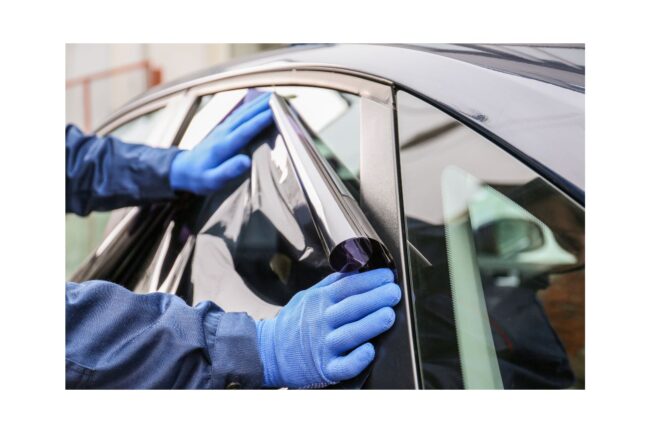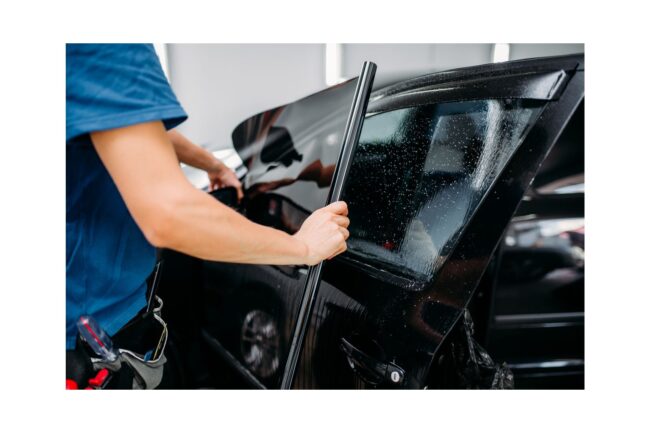In the realm of automotive customization, window tinting stands as a popular choice for individuals seeking a blend of style, privacy, and sun protection. However, navigating the intricate web of window tinting laws can be as challenging as selecting the perfect shade for your vehicle. The regulations surrounding window tinting vary not only from state to state but also across different countries, making it imperative for car owners to stay well-informed about the specific guidelines in their locale.
This blog dives deep into the nuanced world of window tinting laws, unraveling the complexities and shedding light on the crucial details that every vehicle owner should be aware of. From permissible tint levels to the acceptable methods of application, we dissect the legal landscape governing window tinting to empower readers with the knowledge needed to make informed decisions.
Understanding these laws not only ensures compliance but also guarantees a safer driving experience while enjoying the benefits of window tinting. So, fasten your seatbelts as we embark on a journey through the legal intricacies of window tinting, unraveling the key facets that demand your attention.
Legal Tint Levels: Navigating The Shades Of Compliance
Understanding the legal tint levels is a crucial aspect of vehicle customization, as it directly influences compliance with local regulations. Different jurisdictions define acceptable tint darkness in varying ways, ranging from a percentage of light transmission to specific visual light transmittance standards. Navigating these shades of compliance requires an in-depth understanding of the laws governing your area, ensuring that your chosen tint level falls within the permissible limits.
This exploration into legal tint levels will empower car owners to make informed decisions, striking a balance between their aesthetic preferences and adherence to the law, thereby fostering a safer and legally compliant driving experience.
The Relationship Between Tint Darkness And Visibility
The relationship between tint darkness and visibility is a crucial factor to consider when customizing your vehicle’s windows. While window tinting offers benefits such as privacy, UV protection, and enhanced aesthetics, the impact on visibility is a dynamic aspect that demands careful attention. Striking the right balance between these factors ensures a safe driving experience while enjoying the advantages of tinted windows.
 Legal Limits: Understanding and adhering to the legal limits of tint darkness ensures compliance with local regulations.
Legal Limits: Understanding and adhering to the legal limits of tint darkness ensures compliance with local regulations.- Nighttime Visibility: Darker tints may affect nighttime visibility, posing potential safety hazards. Consider lighter tints to maintain optimal visibility after sunset.
- Weather Conditions: Tint darkness can influence visibility in various weather conditions. Assess the impact of tint on rain, fog, or snow for a comprehensive understanding.
- Choose Optimal Tint Levels: Select tint levels that strike a balance between desired aesthetics and maintaining adequate visibility.
- Professional Installation: Ensure tint installation is performed by professionals to minimize the risk of bubbles, distortions, or uneven application that can affect visibility.
- Regular Maintenance: Periodic inspection and maintenance of tinted windows help detect any issues that might compromise visibility and address them promptly.
The relationship between tint darkness and visibility is a nuanced consideration that involves weighing aesthetic preferences against safety concerns. By adhering to legal limits, understanding the impact of tint on different visibility scenarios, and adopting strategies for optimal visibility, car owners can enjoy the advantages of window tinting without compromising safety on the road.
Regional Variations: A State-by-State Analysis
The landscape of window tinting laws is far from uniform, with each state in the U.S. presenting its unique set of regulations. Conducting a comprehensive state-by-state analysis becomes imperative for individuals looking to tint their vehicle windows without running afoul of the law.
Variations in permissible tint levels, as well as additional restrictions, demand a meticulous examination of regional statutes. This section will delve into the intricacies of how state-specific laws impact window tinting, providing readers with a nuanced understanding of the geographical diversity that shapes the legal framework governing automotive customization.
Installation Techniques: Meeting Legal Standards
Ensuring your vehicle’s window tinting meets legal standards involves more than just choosing the right tint level; it extends to the installation techniques employed. The process of applying window tint involves precision, attention to detail, and compliance with specific guidelines to guarantee both effectiveness and legality.
- Precision in Application: Achieving a smooth and uniform tint application is crucial not only for aesthetics but also for compliance. Precise cutting and placement are essential to avoid irregularities that may violate legal standards.
- Adherence to Visible Light Transmittance (VLT) Requirements: The installation process must align with the specified VLT regulations, ensuring that the chosen tint level allows the required amount of light to pass through. Proper measurement and verification are essential to meet legal standards.
- Avoiding Bubbling and Peeling: Proper installation techniques prevent common issues such as bubbling and peeling, which not only compromise the tint’s effectiveness but also may lead to legal troubles. Adhering the tint securely without imperfections is vital.
- Consideration of State-Specific Guidelines: Different states may have specific requirements regarding the installation process, including permissible materials and application methods. Adhering to state-specific guidelines is crucial for legal compliance.
Meeting legal standards in window tint installation is a holistic endeavor, encompassing meticulous attention to detail, adherence to visible light transmittance requirements, prevention of common issues, and consideration of state-specific guidelines. By choosing a professional installer who prioritizes precision and compliance, vehicle owners can enjoy the benefits of window tinting without the risk of legal consequences.
Medical Exemptions: Shedding Light On Special Cases
For individuals with specific medical conditions, obtaining a window tint exemption can be a crucial consideration. This segment will shed light on the special cases that warrant medical exemptions, exploring the criteria, documentation requirements, and the process involved in securing such allowances.
Whether it’s sensitivity to light or a medical necessity for privacy, understanding how and when medical exemptions apply allows car owners to navigate the legal terrain with a heightened awareness of their rights. By delving into these special cases, this section aims to provide a comprehensive guide for those seeking clarity on the intersection of medical needs and window tinting laws.
Future Trends: The Evolution Of Window Tinting Laws
As technology and societal preferences continue to evolve, so do the laws governing window tinting. The future promises a dynamic landscape for automotive customization, with window tinting laws adapting to accommodate emerging trends and innovations. This section delves into the anticipated shifts in window tinting regulations, providing insights into how advancements may shape the legal framework for vehicle customization in the years to come.
 Smart Tinting Technologies: The integration of smart tinting technologies that allow users to adjust tint levels electronically may become a focal point in future regulations, introducing new considerations for lawmakers.
Smart Tinting Technologies: The integration of smart tinting technologies that allow users to adjust tint levels electronically may become a focal point in future regulations, introducing new considerations for lawmakers.- Energy-Efficient Solutions: With a growing emphasis on environmental sustainability, future window tinting laws may incentivize or regulate the use of energy-efficient tinting solutions that contribute to reducing a vehicle’s overall energy consumption.
- Privacy and Security Concerns: As concerns over privacy and vehicle security escalate, future laws may address the balance between tinting for privacy and the need for visibility to enhance overall safety.
- Standardization of Regulations: Anticipated efforts to standardize window tinting regulations across regions or countries may simplify compliance for car owners and manufacturers alike.
The evolution of window tinting laws reflects a harmonious blend of technological progress, environmental consciousness, and societal priorities. As we venture into the future, staying attuned to these anticipated trends will be paramount for both vehicle owners and the automotive industry at large.
By understanding and embracing these changes, individuals can ensure that their window tinting choices align with the evolving legal landscape while enjoying the benefits of cutting-edge advancements in automotive customization.
Fines And Penalties: The Cost Of Non-Compliance
Non-compliance with window tinting laws can result in fines and penalties that extend beyond a mere inconvenience. This segment will meticulously examine the potential costs associated with violating tinting regulations, considering both immediate financial repercussions and potential long-term consequences. From increased insurance premiums to legal consequences, understanding the full scope of the cost of non-compliance emphasizes the importance of adherence to tinting laws.
By exploring these fines and penalties in detail, car owners can make informed choices that not only align with their aesthetic preferences but also safeguard them from the financial pitfalls of running afoul of the law.
Your journey through the intricate world of window tinting laws has hopefully equipped you with valuable insights into the nuances that govern this aspect of automotive customization. At Quality Auto Glass Tint, we take pride in being your trusted partner in transforming auto glass aspirations into reality.
Our commitment to excellence, coupled with over two decades of industry expertise, ensures that every service, be it window tinting, paint protection, or windshield repair, exceeds your expectations. As you navigate the ever-evolving landscape of tinting laws, remember that our team at Quality Auto Glass Tint stands ready to provide unparalleled service and support. Your vehicle deserves the best, and we are here to deliver just that.
Contact us at 9110 Fairway Dr, Roseville, CA 95678, or reach out at (916) 888-8495 or Roseville@qualityautoglasstint.com. Our dedicated team is available Monday to Saturday, from 9 am to 5 pm. Let’s embark on this journey together, ensuring your vehicle not only complies with tinting laws but stands as a testament to quality and style. Trust Quality Auto Glass Tint for all your auto glass needs, where excellence is not just a promise but a guarantee.




